Mangalyaan-India-Mars-Orbiter-MissionMOM.pptx
Download as PPTX, PDF0 likes7 views
THEORY DISCOURSE
1 of 10
Download to read offline










Recommended
Chandrayaan-3-Indias-Next-Lunar-Conquest.pptx



Chandrayaan-3-Indias-Next-Lunar-Conquest.pptxsustainability11
╠²
The Success of Chandrayaan-3 is explained in this PPt,Chandrayaan-3 India 3 moon mission .pptx



Chandrayaan-3 India 3 moon mission .pptxsenlalit450
╠²
Chandrayaan 3 India's mission to moon. An incredible achievement, India became the first country in the world to land on South Pole of the moon and 4th country to which have it's own lander and rover on the moon surface. (ISRO)-The Indian Space Research Organisation_ (Chandrayaan-3).pdf



(ISRO)-The Indian Space Research Organisation_ (Chandrayaan-3).pdfhowale41
╠²
Chandrayaan-3 was anticipated to be India's third lunar exploration mission following Chandrayaan-1 and Chandrayaan-2. It was expected to focus solely on a lander and rover, omitting the orbiter from Chandrayaan-2 since it was still operational. The goal of Chandrayaan-3 would be to achieve a successful soft landing on the Moon and further explore the lunar surface, building on lessons learned from Chandrayaan-2 where the lander faced challenges during descent. For Chandrayaan-3 to succeed, it would need to utilize reliable launch vehicles, precisely designed spacecraft equipped for soft landings and scientific exploration, and effective communication systems.Mars Orbiter Mission (MOM), also called Mangalyaan With Mp4 Video..best ppt



Mars Orbiter Mission (MOM), also called Mangalyaan With Mp4 Video..best pptNoman Jarang
╠²
The Mars Orbiter Mission (MOM), also called Mangalyaan ("Mars-craft" from Sanskrit Óż«ÓżéÓżŚÓż▓ mangala, "Mars" and Óż»ÓżŠÓż© y─üna, "craft, vehicle"), is a spacecraft orbiting Mars since 24 September 2014. It was launched on 5 November 2013 by the Indian Space Research Organisation (ISRO)INDIA'S MARS ORBITER MISSION



INDIA'S MARS ORBITER MISSIONAnurag Jain
╠²
The document discusses India's Mars Orbiter Mission (MOM) launched in 2013. MOM's objectives were to develop technologies for designing and operating an interplanetary mission, and to explore Mars' surface, atmosphere, and mineralogy using scientific instruments. The mission cost 4.54 billion rupees total. MOM's spacecraft weighed 1350 kg and carried 5 scientific payloads. It was successfully launched on November 5, 2013 and entered Mars' orbit on September 24, 2014, making India the first Asian nation to reach Mars.Mom(mars orbiter mission)



Mom(mars orbiter mission)Shikhar Saraswat
╠²
COMPLETE DISCRIPTION ON THE MOM OF ISRO AND IT'S ACHIEVEMENTS AND HOW IT WOULD HELP IN INDIA'S DEVELOPMENTAND GROWTHMars orbiter mission (Mangalyaan)The govt. of INDIA



Mars orbiter mission (Mangalyaan)The govt. of INDIAArchit Jindal
╠²
All details of the Mars orbiter mission of India. Also the details about ISRO who is carrying out this mission. Also Mp4 video of launch of PSLV-XL which was the launch vehicle for the spacecraft. I hope this presentation is useful for you.The video will work.MOM Mission



MOM Missionsharmaprateek553
╠²
ISRO was established in 1969 to oversee India's space program. Some key accomplishments include launching India's first satellite in 1975 and developing launch vehicles like PSLV and GSLV. In 2008, ISRO successfully launched Chandrayaan-1, India's first lunar mission. On November 5, 2013, ISRO launched the Mars Orbiter Mission (MOM), its first interplanetary mission, which is currently orbiting Mars and gathering scientific data. The mission aims to demonstrate India's capability for interplanetary travel through technological objectives like designing a Mars orbiter and navigating in deep space, as well as scientific objectives like studying Mars' surface and atmosphere.Mangalyaan - wiki



Mangalyaan - wikibsmukunth
╠²
The Mars Orbiter Mission (MOM), also known as Mangalyaan, is India's first interplanetary mission, which aims to demonstrate technologies required for designing and operating an orbiter mission to Mars. Launched in 2013 aboard a Polar Satellite Launch Vehicle from Sriharikota, India, MOM entered orbit around Mars in 2014, making India the first Asian nation to reach Mars. The mission carries scientific instruments to study the Martian surface, atmosphere and climate. If successful, MOM will make India the fourth space agency to place a spacecraft in orbit around Mars.Chandrayaan 3 : A Journey To The Unknown



Chandrayaan 3 : A Journey To The UnknownRanitChatterjee4
╠²
Presentation about National Space Day with Chandrayaan 3
Credits : All the info and images are taken from wikipedia, ISRO and other reliable internet stuff.
Presentors :
Ranit Sundar Chatterjee, Pallab Das, Angshuman Manna, Subhas Lochansourav jee.docx



sourav jee.docxSouravGorai19
╠²
Chandrayaan-3 was India's third lunar exploration mission, launched on July 14, 2023. It consisted of a lunar lander named Vikram and rover named Pragyan. On August 23, Vikram successfully soft landed near the lunar south pole, making India the first nation to do so and the fourth to land on the Moon. The mission aims to conduct scientific experiments to further our understanding of the Moon and its potential resources like water. It represents a significant achievement for India's space program.Chandrayan 



Chandrayan SCET
╠²
The Indian space programmed had begun with no intentions of undertaking sophisticated initiatives like human spaceflight and extraterrestrial missions during the initial days. It was only after ISRO developed the capabilities of creating satellites and orbital launch vehicles like PSLV, that the possibilities of India's first extraterrestrial exploration mission to the Moon were being explored in the early 2000s.Mission to MARS orbital 



Mission to MARS orbital HPNLU, Shimla
╠²
The document discusses India's Mars Orbiter Mission (MOM) launched in 2013, which successfully entered Mars' orbit in 2014, making India the first nation to reach Mars on its maiden attempt. Key details include:
- MOM was launched using India's Polar Satellite Launch Vehicle from Sriharikota. It carried a variety of scientific instruments to study Mars.
- After a 298-day transit, MOM successfully entered Mars' orbit on September 24, 2014, making India the fourth space agency to reach Mars.
- The mission demonstrates India's capabilities for interplanetary travel while advancing scientific understanding of Mars through its onboard instruments.MARS ORBITER MISSION (MOM) (MANGALYAN)



MARS ORBITER MISSION (MOM) (MANGALYAN)VinodKumar Reddy A
╠²
The document summarizes India's Mars Orbiter Mission (MOM), which made India the first nation to successfully reach Mars on its first attempt. MOM was launched aboard a Polar Satellite Launch Vehicle on November 5, 2013. It carried scientific instruments to study the Martian atmosphere and surface. After orbit raising maneuvers, MOM was successfully inserted into Mars' orbit on September 24, 2014, making India the fourth space agency to reach Mars. The mission aims to develop technologies for interplanetary travel and explore the Red Planet's features and atmosphere.overseas education consultants in hyderabad



overseas education consultants in hyderabadlahari669323
╠²
G2G Overseas fulfills dreams abroad for people and has helped 5000+ dreamers fulfill their dreams abroad. We help with different types of visas that will ticket you to travel overseas and fulfill youn diverse educational exams like IELTS, PTE, GRE, and TOEFL. We provide new-age software and technology training such as Microsoft Training, Oracle Apps training, IBM Training, Java, and more.Mangalyaan (India's mission to mars)



Mangalyaan (India's mission to mars)prathik_gs
╠²
India's Mars Orbiter Mission (MOM), also known as Mangalyaan, is the cheapest Mars mission ever at a cost of about $74 million. It was developed and launched in just 15 months and involves sending an orbiter craft to orbit Mars and study its surface features and atmosphere. The mission aims to demonstrate India's technological capability to design, plan and manage deep space missions.ŌĆ£Dissecting a Space OdysseyŌĆØ Systematic Study of Path travelled by LMV3 of Ch...



ŌĆ£Dissecting a Space OdysseyŌĆØ Systematic Study of Path travelled by LMV3 of Ch...IRJET Journal
╠²
1) Chandrayaan-3 was launched on July 14, 2023 by ISRO to demonstrate India's ability to soft land on the lunar surface.
2) The mission consists of a lander named Vikram and rover named Pragyan, with the goal of landing in the South Pole region to study the lunar surface and search for water.
3) Vikram successfully landed on the Moon's surface on August 23, 2023, allowing Pragyan to explore the surrounding area and conduct scientific experiments.mangalyaan



mangalyaanRakesh Bhaskar
╠²
The Mars Orbital Mission (MOM) aims to design and realize an orbiter with the capability to survive Earth maneuvers, a 300-day cruise phase, Mars orbit insertion and on-orbit phases around Mars to study its surface features, mineralogy and atmosphere. The objectives include deep space communication and navigation with autonomous capabilities. The total cost of 450 crore rupees for MOM is less than 1/10th of the amount spent by NASA on its MAVEN Mars mission. MOM was launched aboard the PSLV rocket on November 5th, 2013 and includes scientific instruments to study Mars' composition, atmosphere and climate.Mars Orbiter Mission ( MOM ) or Mangalyaan 



Mars Orbiter Mission ( MOM ) or Mangalyaan aman2227
╠²
India successfully launched the Mars Orbiter Mission (MOM) in November 2013, reaching Mars' orbit in September 2014. MOM cost $74 million, making it the least expensive Mars mission to date. Its objectives were to demonstrate India's technological capability and to study Mars' surface and atmosphere using five scientific instruments. The mission succeeded in placing India among an elite group of four nations that have reached Mars.Copy of ║▌║▌▀ŻEgg_200407-Chandrayaan 3.pptx



Copy of ║▌║▌▀ŻEgg_200407-Chandrayaan 3.pptxswarajkute
╠²
Chandrayaan 2 PPT Presentation And Google ║▌║▌▀Żs ThemesMangalyaan: The Mars Orbitary Misssion



Mangalyaan: The Mars Orbitary MisssionMohammed Aslam
╠²
The Mars Orbiter Mission (MOM), also called Mangalyaan, is a spacecraft orbiting Mars that was launched by the Indian Space Research Organization (ISRO) in November 2013. It is India's first interplanetary mission and made ISRO the fourth space agency to reach Mars. The primary objective was to demonstrate India's technological capability to design, plan and manage an interplanetary mission. It also carried scientific instruments to study Mars' surface features, morphology, mineralogy and atmosphere. Mangalyaan successfully entered Mars' orbit in September 2014 and continues to transmit data, making it one of the least expensive Mars missions to date.2583



2583loyalj
╠²
This document summarizes the Regolith & Environment Science, and Oxygen & Lunar Volatile Extraction (RESOLVE) mission architecture for prospecting and utilizing lunar resources. Key aspects include:
The RESOLVE rover payload will conduct a 10-day surface mission at the Cabeus crater near the lunar south pole in May 2016. The payload will acquire samples up to 1m deep and characterize volatiles and perform ISRU demonstrations to extract oxygen.
A solar-powered rover was selected as the architecture to survive a long mission, range far from the landing site, and have the lowest risk. The 243kg rover will survey 3,000m powered by a 250W solar array and 3,Mars orbiter mission



Mars orbiter missionSreerag Murali
╠²
The document summarizes India's Mars Orbiter Mission (MOM) launched in 2013. It describes Mars and previous Mars missions by other countries. MOM was India's first interplanetary mission, making it the fourth space agency to reach Mars. The mission's objectives were to demonstrate India's low-cost space technology and study Mars' surface features and atmosphere. MOM carried scientific instruments that analyzed Mars' atmosphere and surface composition, and it remains operational in Mars' orbit. The successful mission boosted India's presence in space exploration and scientific research.Mars Orbiter Mission ( Mangalyaan ) .pptx



Mars Orbiter Mission ( Mangalyaan ) .pptxbhavyachauhan353
╠²
Made by : Bhavya
Class : 9 'A'
School : SCR Public SchoolChandrayaan.pdf



Chandrayaan.pdfMSVictoryClasses
╠²
Chandrayaan-3 (transl. Moon-craft, pronunciation (help┬Ęinfo))[8] is the third and most recent
Indian lunar exploration mission under the Chandrayaan programme of ISRO.[8] It consists of a
lander named Vikram and a rover named Pragyan similar to Chandrayaan-2. Its propulsion
module would act like an orbiter. The propulsion module carries the lander and rover
configuration until the spacecraft is in a 100-kilometre (62 mi) lunar orbit.[9][10]
Following Chandrayaan-2, where a last-minute glitch in the landing guidance software led to the
lander crashing after entering lunar orbit, another lunar mission was proposed.[11]
The launch of Chandrayaan-3 took place on 14 July 2023, at 2:35 pm IST.[12] The lander and
rover are expected to land near the lunar south pole region on 23 August 2023. The powered
descent is scheduled for 23 August 2023, around 05:45 pm IST and touchdown is expected on
the same day around 06:05 pm IST.mars orbitter mission success



mars orbitter mission successJanglin Solaman C
╠²
This document provides information about the Mars Orbiter Mission (MOM) launched by India's space agency ISRO. MOM's objectives were to develop the technologies to design, plan, manage and operate an interplanetary mission; place a satellite in Mars orbit; and study the Martian surface, morphology, mineralogy and atmosphere. The spacecraft was launched in 2013 aboard an ISRO PSLV rocket and entered Mars orbit in 2014. Its scientific payload included instruments to study atmospheric composition, methane, temperature and mineralogy. The mission successfully demonstrated India's low-cost Mars orbital insertion capabilities.P.Lokesh Mangalyan.pptx



P.Lokesh Mangalyan.pptxSaivenkatBingi1
╠²
The Mars Orbiter Mission (MOM), also known as Mangalyaan, is an Indian Space Research Organisation (ISRO) Mars orbiter launched in 2013. It successfully entered Martian orbit in 2014. The objectives were to design and operate an orbiter with the capability to survive Earth maneuvers, a 300 day cruise, Mars orbit insertion, and orbit Mars. It also aimed to explore Mars' surface features, morphology, mineralogy and atmosphere. MOM was launched using a Polar Satellite Launch Vehicle and placed in an elliptical parking orbit, then maneuvered into a hyperbolic trajectory to escape Earth's sphere of influence. It then entered an elliptical orbit around Mars after engine firing at periapsis. The spacecraftEnvironmental Product Declaration - Uni Bell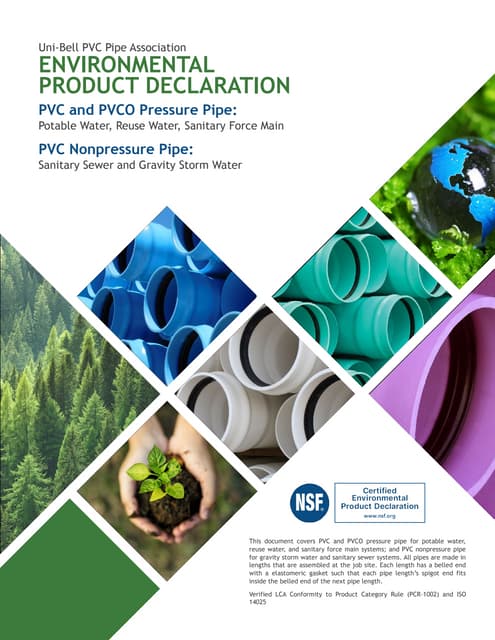



Environmental Product Declaration - Uni BellManishPatel169454
╠²
The Uni-Bell PVC Pipe Association (PVCPA) has published the first North American industry-wide environmental product declaration (EPD) for water and sewer piping, and it has been verified by NSF Sustainability, a division of global public health organization NSF International.More Related Content
Similar to Mangalyaan-India-Mars-Orbiter-MissionMOM.pptx (20)
Mangalyaan - wiki



Mangalyaan - wikibsmukunth
╠²
The Mars Orbiter Mission (MOM), also known as Mangalyaan, is India's first interplanetary mission, which aims to demonstrate technologies required for designing and operating an orbiter mission to Mars. Launched in 2013 aboard a Polar Satellite Launch Vehicle from Sriharikota, India, MOM entered orbit around Mars in 2014, making India the first Asian nation to reach Mars. The mission carries scientific instruments to study the Martian surface, atmosphere and climate. If successful, MOM will make India the fourth space agency to place a spacecraft in orbit around Mars.Chandrayaan 3 : A Journey To The Unknown



Chandrayaan 3 : A Journey To The UnknownRanitChatterjee4
╠²
Presentation about National Space Day with Chandrayaan 3
Credits : All the info and images are taken from wikipedia, ISRO and other reliable internet stuff.
Presentors :
Ranit Sundar Chatterjee, Pallab Das, Angshuman Manna, Subhas Lochansourav jee.docx



sourav jee.docxSouravGorai19
╠²
Chandrayaan-3 was India's third lunar exploration mission, launched on July 14, 2023. It consisted of a lunar lander named Vikram and rover named Pragyan. On August 23, Vikram successfully soft landed near the lunar south pole, making India the first nation to do so and the fourth to land on the Moon. The mission aims to conduct scientific experiments to further our understanding of the Moon and its potential resources like water. It represents a significant achievement for India's space program.Chandrayan 



Chandrayan SCET
╠²
The Indian space programmed had begun with no intentions of undertaking sophisticated initiatives like human spaceflight and extraterrestrial missions during the initial days. It was only after ISRO developed the capabilities of creating satellites and orbital launch vehicles like PSLV, that the possibilities of India's first extraterrestrial exploration mission to the Moon were being explored in the early 2000s.Mission to MARS orbital 



Mission to MARS orbital HPNLU, Shimla
╠²
The document discusses India's Mars Orbiter Mission (MOM) launched in 2013, which successfully entered Mars' orbit in 2014, making India the first nation to reach Mars on its maiden attempt. Key details include:
- MOM was launched using India's Polar Satellite Launch Vehicle from Sriharikota. It carried a variety of scientific instruments to study Mars.
- After a 298-day transit, MOM successfully entered Mars' orbit on September 24, 2014, making India the fourth space agency to reach Mars.
- The mission demonstrates India's capabilities for interplanetary travel while advancing scientific understanding of Mars through its onboard instruments.MARS ORBITER MISSION (MOM) (MANGALYAN)



MARS ORBITER MISSION (MOM) (MANGALYAN)VinodKumar Reddy A
╠²
The document summarizes India's Mars Orbiter Mission (MOM), which made India the first nation to successfully reach Mars on its first attempt. MOM was launched aboard a Polar Satellite Launch Vehicle on November 5, 2013. It carried scientific instruments to study the Martian atmosphere and surface. After orbit raising maneuvers, MOM was successfully inserted into Mars' orbit on September 24, 2014, making India the fourth space agency to reach Mars. The mission aims to develop technologies for interplanetary travel and explore the Red Planet's features and atmosphere.overseas education consultants in hyderabad



overseas education consultants in hyderabadlahari669323
╠²
G2G Overseas fulfills dreams abroad for people and has helped 5000+ dreamers fulfill their dreams abroad. We help with different types of visas that will ticket you to travel overseas and fulfill youn diverse educational exams like IELTS, PTE, GRE, and TOEFL. We provide new-age software and technology training such as Microsoft Training, Oracle Apps training, IBM Training, Java, and more.Mangalyaan (India's mission to mars)



Mangalyaan (India's mission to mars)prathik_gs
╠²
India's Mars Orbiter Mission (MOM), also known as Mangalyaan, is the cheapest Mars mission ever at a cost of about $74 million. It was developed and launched in just 15 months and involves sending an orbiter craft to orbit Mars and study its surface features and atmosphere. The mission aims to demonstrate India's technological capability to design, plan and manage deep space missions.ŌĆ£Dissecting a Space OdysseyŌĆØ Systematic Study of Path travelled by LMV3 of Ch...



ŌĆ£Dissecting a Space OdysseyŌĆØ Systematic Study of Path travelled by LMV3 of Ch...IRJET Journal
╠²
1) Chandrayaan-3 was launched on July 14, 2023 by ISRO to demonstrate India's ability to soft land on the lunar surface.
2) The mission consists of a lander named Vikram and rover named Pragyan, with the goal of landing in the South Pole region to study the lunar surface and search for water.
3) Vikram successfully landed on the Moon's surface on August 23, 2023, allowing Pragyan to explore the surrounding area and conduct scientific experiments.mangalyaan



mangalyaanRakesh Bhaskar
╠²
The Mars Orbital Mission (MOM) aims to design and realize an orbiter with the capability to survive Earth maneuvers, a 300-day cruise phase, Mars orbit insertion and on-orbit phases around Mars to study its surface features, mineralogy and atmosphere. The objectives include deep space communication and navigation with autonomous capabilities. The total cost of 450 crore rupees for MOM is less than 1/10th of the amount spent by NASA on its MAVEN Mars mission. MOM was launched aboard the PSLV rocket on November 5th, 2013 and includes scientific instruments to study Mars' composition, atmosphere and climate.Mars Orbiter Mission ( MOM ) or Mangalyaan 



Mars Orbiter Mission ( MOM ) or Mangalyaan aman2227
╠²
India successfully launched the Mars Orbiter Mission (MOM) in November 2013, reaching Mars' orbit in September 2014. MOM cost $74 million, making it the least expensive Mars mission to date. Its objectives were to demonstrate India's technological capability and to study Mars' surface and atmosphere using five scientific instruments. The mission succeeded in placing India among an elite group of four nations that have reached Mars.Copy of ║▌║▌▀ŻEgg_200407-Chandrayaan 3.pptx



Copy of ║▌║▌▀ŻEgg_200407-Chandrayaan 3.pptxswarajkute
╠²
Chandrayaan 2 PPT Presentation And Google ║▌║▌▀Żs ThemesMangalyaan: The Mars Orbitary Misssion



Mangalyaan: The Mars Orbitary MisssionMohammed Aslam
╠²
The Mars Orbiter Mission (MOM), also called Mangalyaan, is a spacecraft orbiting Mars that was launched by the Indian Space Research Organization (ISRO) in November 2013. It is India's first interplanetary mission and made ISRO the fourth space agency to reach Mars. The primary objective was to demonstrate India's technological capability to design, plan and manage an interplanetary mission. It also carried scientific instruments to study Mars' surface features, morphology, mineralogy and atmosphere. Mangalyaan successfully entered Mars' orbit in September 2014 and continues to transmit data, making it one of the least expensive Mars missions to date.2583



2583loyalj
╠²
This document summarizes the Regolith & Environment Science, and Oxygen & Lunar Volatile Extraction (RESOLVE) mission architecture for prospecting and utilizing lunar resources. Key aspects include:
The RESOLVE rover payload will conduct a 10-day surface mission at the Cabeus crater near the lunar south pole in May 2016. The payload will acquire samples up to 1m deep and characterize volatiles and perform ISRU demonstrations to extract oxygen.
A solar-powered rover was selected as the architecture to survive a long mission, range far from the landing site, and have the lowest risk. The 243kg rover will survey 3,000m powered by a 250W solar array and 3,Mars orbiter mission



Mars orbiter missionSreerag Murali
╠²
The document summarizes India's Mars Orbiter Mission (MOM) launched in 2013. It describes Mars and previous Mars missions by other countries. MOM was India's first interplanetary mission, making it the fourth space agency to reach Mars. The mission's objectives were to demonstrate India's low-cost space technology and study Mars' surface features and atmosphere. MOM carried scientific instruments that analyzed Mars' atmosphere and surface composition, and it remains operational in Mars' orbit. The successful mission boosted India's presence in space exploration and scientific research.Mars Orbiter Mission ( Mangalyaan ) .pptx



Mars Orbiter Mission ( Mangalyaan ) .pptxbhavyachauhan353
╠²
Made by : Bhavya
Class : 9 'A'
School : SCR Public SchoolChandrayaan.pdf



Chandrayaan.pdfMSVictoryClasses
╠²
Chandrayaan-3 (transl. Moon-craft, pronunciation (help┬Ęinfo))[8] is the third and most recent
Indian lunar exploration mission under the Chandrayaan programme of ISRO.[8] It consists of a
lander named Vikram and a rover named Pragyan similar to Chandrayaan-2. Its propulsion
module would act like an orbiter. The propulsion module carries the lander and rover
configuration until the spacecraft is in a 100-kilometre (62 mi) lunar orbit.[9][10]
Following Chandrayaan-2, where a last-minute glitch in the landing guidance software led to the
lander crashing after entering lunar orbit, another lunar mission was proposed.[11]
The launch of Chandrayaan-3 took place on 14 July 2023, at 2:35 pm IST.[12] The lander and
rover are expected to land near the lunar south pole region on 23 August 2023. The powered
descent is scheduled for 23 August 2023, around 05:45 pm IST and touchdown is expected on
the same day around 06:05 pm IST.mars orbitter mission success



mars orbitter mission successJanglin Solaman C
╠²
This document provides information about the Mars Orbiter Mission (MOM) launched by India's space agency ISRO. MOM's objectives were to develop the technologies to design, plan, manage and operate an interplanetary mission; place a satellite in Mars orbit; and study the Martian surface, morphology, mineralogy and atmosphere. The spacecraft was launched in 2013 aboard an ISRO PSLV rocket and entered Mars orbit in 2014. Its scientific payload included instruments to study atmospheric composition, methane, temperature and mineralogy. The mission successfully demonstrated India's low-cost Mars orbital insertion capabilities.P.Lokesh Mangalyan.pptx



P.Lokesh Mangalyan.pptxSaivenkatBingi1
╠²
The Mars Orbiter Mission (MOM), also known as Mangalyaan, is an Indian Space Research Organisation (ISRO) Mars orbiter launched in 2013. It successfully entered Martian orbit in 2014. The objectives were to design and operate an orbiter with the capability to survive Earth maneuvers, a 300 day cruise, Mars orbit insertion, and orbit Mars. It also aimed to explore Mars' surface features, morphology, mineralogy and atmosphere. MOM was launched using a Polar Satellite Launch Vehicle and placed in an elliptical parking orbit, then maneuvered into a hyperbolic trajectory to escape Earth's sphere of influence. It then entered an elliptical orbit around Mars after engine firing at periapsis. The spacecraftRecently uploaded (20)
Environmental Product Declaration - Uni Bell



Environmental Product Declaration - Uni BellManishPatel169454
╠²
The Uni-Bell PVC Pipe Association (PVCPA) has published the first North American industry-wide environmental product declaration (EPD) for water and sewer piping, and it has been verified by NSF Sustainability, a division of global public health organization NSF International.Designing Flex and Rigid-Flex PCBs to Prevent Failure



Designing Flex and Rigid-Flex PCBs to Prevent FailureEpec Engineered Technologies
╠²
Flex and rigid-flex printed circuit boards (PCBs) can be considered at the basic level some of the most complex PCBs in the industry. With that in mind, itŌĆÖs incredibly easy to make a mistake, to leave something out, or to create a design that was doomed from the start.
Such design failures can end up leading to an eventual failure by delamination, short circuits, damage to the flex portions, and many other things. The easiest way to circumvent these is to start at the beginning, to design with preventing failure in mind rather than trying to fix existing designs to accommodate for problems.
In this webinar, we cover how to design flex and rigid-flex PCBs with failure prevention in mind to save time, money, and headaches, and what failure can look like.
For more information on our flex and rigid-flex PCB solutions, visit https://www.epectec.com/flex.ESIT135 Problem Solving Using Python Notes of Unit-2 and Unit-3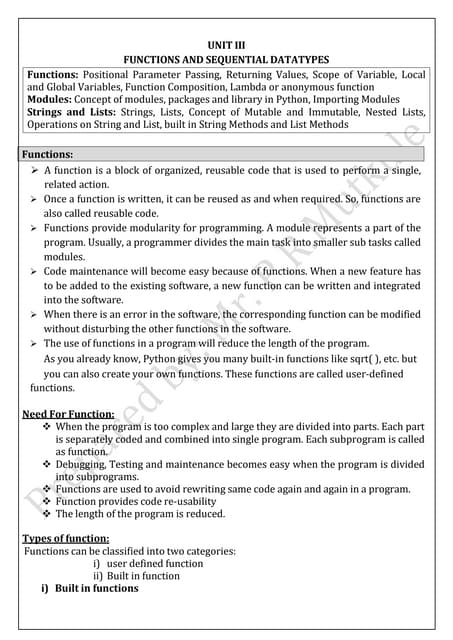



ESIT135 Problem Solving Using Python Notes of Unit-2 and Unit-3prasadmutkule1
╠²
ESIT135 Problem Solving Using Python Notes of Unit-2 and Unit-3IoT-based-Electrical-Motor-Fault-Detection-System.pptx



IoT-based-Electrical-Motor-Fault-Detection-System.pptxatharvapardeshi03
╠²
IoT-based-Electrical-Motor-Fault-Detection-System.pptxAIR FILTER system in internal combustion engine system.ppt



AIR FILTER system in internal combustion engine system.pptthisisparthipan1
╠²
air filter system in ic engine Von karman Equation full derivation .pdf



Von karman Equation full derivation .pdfEr. Gurmeet Singh
╠²
Von karman Equation full derivation
By Er. GURMEET SINGH
G.C.E.T JAMMU
Contact: gurmeet.b.tech@gmail.com
M.tech Transportation Engineering Cloud Cost Optimization for GCP, AWS, Azure



Cloud Cost Optimization for GCP, AWS, Azurevinothsk19
╠²
Reduce Cloud Waste across AWS, GCP, Azure and Optimize Cloud Cost with a structured approach and improve your bottomline or profitability. Decide whether you want to outsource or manage it in house. Helium Boosting & Decanting With Hydro Test Machine



Helium Boosting & Decanting With Hydro Test MachinePaskals Fluid Systems Pvt. Ltd.
╠²
About:
A helium boosting and decanting system is typically used in various industrial applications, particularly in the production and handling of gases, including helium including leak test of reciprocating cylinder. HereŌĆÖs a brief overview of its components and functions:
Components
1. Helium Storage Tanks: High-pressure tanks that store helium@ 150 bars.
2. Boosting Pumps: Designed to boost helium pressure up to 150 bar, ensuring efficient flow throughout the system.
3. Decanting Unit: Separates liquid helium from gas, facilitating decanting at pressures of up to 2 bars.
4. Pressure Regulators: Maintain and control the pressure of helium during transport.
5. Control Valves: automatic control valve is provided for the flow and direction of helium through the system.
6. Piping and Fittings: High-quality, corrosion-resistant materials for safe transport.
Functions
ŌĆó Boosting Pressure: The system boosts helium pressure up to 150 bar for various applications.
ŌĆó Decanting: Safely decants helium, separating liquid from gas at pressures of up to 2 bar.
ŌĆó Safety Measures: Equipped with relief valves and emergency shut-off systems to handle high pressures safely.
ŌĆó Monitoring and Control: Sensors and automated controls monitor pressure and flow rates.
Application:
ŌĆó Cryogenics: Cooling superconducting magnets in MRI machines and particle accelerators.
ŌĆó Welding: Used as a shielding gas in welding processes.
ŌĆó Research: Crucial for various scientific applications, including laboratories and space exploration.
Key Features:
ŌĆó Helium Storage & Boosting System
ŌĆó Decanting System
ŌĆó Pressure Regulation & Monitoring
ŌĆó Valves & Flow Control
ŌĆó Filtration & Safety Components
ŌĆó Structural & Material Specifications
ŌĆó Automation & Electrical Components
Failover System in Cloud Computing System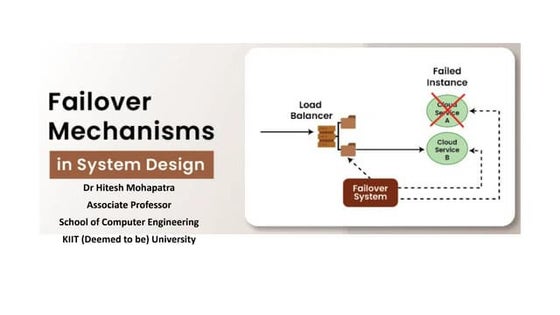



Failover System in Cloud Computing SystemHitesh Mohapatra
╠²
Uses established clustering technologies for redundancy
Boosts availability and reliability of IT resources
Automatically transitions to standby instances when active resources become unavailable
Protects mission-critical software and reusable services from single points of failure
Can cover multiple geographical areas
Hosts redundant implementations of the same IT resource at each location
Relies on resource replication for monitoring defects and unavailability conditionsESIT135 Problem Solving Using Python Notes of Unit-3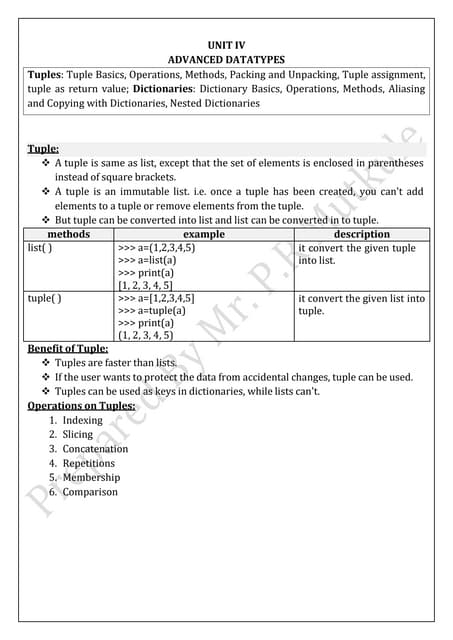



ESIT135 Problem Solving Using Python Notes of Unit-3prasadmutkule1
╠²
ESIT135 Problem Solving Using Python Notes of Unit-3 Turbocor Product and Technology Review.pdf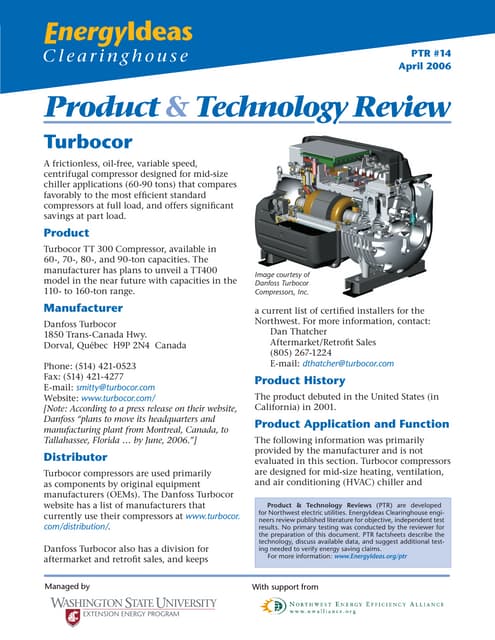



Turbocor Product and Technology Review.pdfTotok Sulistiyanto
╠²
High Efficiency Chiller System in HVACAI ppt on water jug problem by shivam sharma



AI ppt on water jug problem by shivam sharmaShivamSharma588604
╠²
this ppt is made on the topic of water jug problem.Machine Vision lecture notes for Unit 3.ppt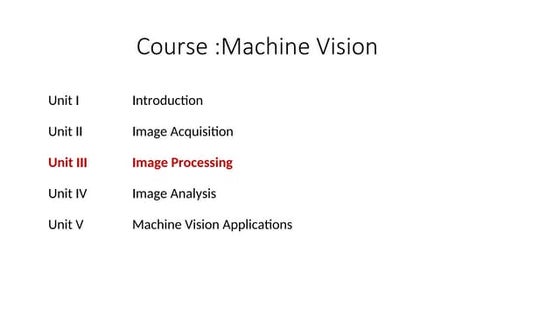



Machine Vision lecture notes for Unit 3.pptSATHISHKUMARSD1
╠²
This is the document related to machine vision subject for final year mechatronics students.INVESTIGATION OF PUEA IN COGNITIVE RADIO NETWORKS USING ENERGY DETECTION IN D...



INVESTIGATION OF PUEA IN COGNITIVE RADIO NETWORKS USING ENERGY DETECTION IN D...csijjournal
╠²
Primary User Emulation Attack (PUEA) is one of the major threats to the spectrum sensing in cognitive
radio networks. This paper studies the PUEA using energy detection that is based on the energy of the
received signal. It discusses the impact of increasing the number of attackers on the performance of
secondary user. Moreover, studying how the malicious user can emulate the Primary User (PU) signal is
made. This is the first analytical method to study PUEA under a different number of attackers. The
detection of the PUEA increases with increasing the number of attackers and decreases when changing the
channel from lognormal to Rayleigh fading.AO Star Algorithm in Artificial Intellligence



AO Star Algorithm in Artificial Intellligencevipulkondekar
╠²
AO Star Algorithm in Artificial IntellligenceESIT135 Problem Solving Using Python Notes of Unit-1 and Unit-2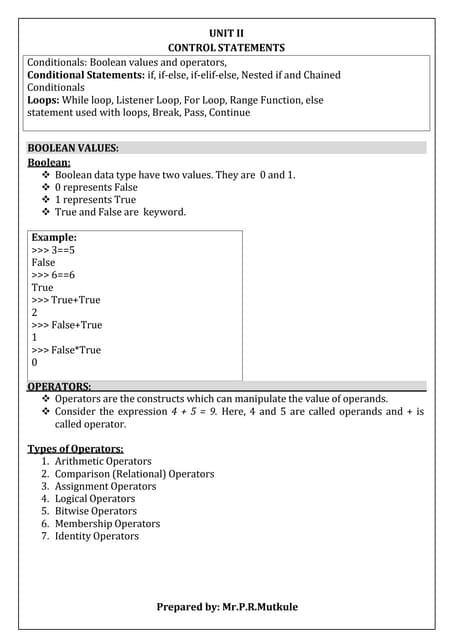



ESIT135 Problem Solving Using Python Notes of Unit-1 and Unit-2prasadmutkule1
╠²
ESIT135 Problem Solving Using Python Notes of Unit-1 and Unit-2Mangalyaan-India-Mars-Orbiter-MissionMOM.pptx
- 1. Mangalyaan: India's Mars Orbiter Mission(MOM) Mangalyaan, India's first interplanetary mission, was launched in 2013 to study the Martian atmosphere and surface from orbit.
- 2. Introduction ŌĆó The PSLV-XL C25 was launched on 5 November 2013 by the ŌĆŗ Indian Space Research Organization ŌĆŗ (ISRO) from Srih ŌĆó Some of the key scientists of ISRO and engineers involved in the mission include: ŌĆŗ ŌĆŗ ŌĆŗ K.Radhakrishnan,ŌĆŗV Kesava Raju, Subbiah Arun, Moumita Dutta, Nandini Harinath, Ritu Karidhal Srivastava. ŌĆó The total cost of the mission was approximately Ōé╣450 ŌĆŗ CroresŌĆŗ(US$73 million). ŌĆó The shuttle uses the bipropellant combination Monomethylhydrazine (MMH) and Dinitrogen tetroxide to achieve the thrust necessary for ŌĆŗ escape velocityŌĆŗfrom Earth. The chairman, ISRO, Shri A.S. Kiran Kumar releasing the Mars Atlas on the occasion of the completion of one year of Mars Orbiter Mission
- 3. Objectives of the Mission Explore Mars Study the Martian atmosphere, climate, and surface features. Technological Demonstration Test the capabilities of Indian space technology for future deep space missions. Cost-Effective Approach Achieve Mars orbit at a fraction of the cost of other Mars missions.
- 4. Remote Sensing Instruments 1.Payload Mangalyaan carries 5 scientific instruments for remote sensing of Mars. 2.Imaging Camera Captures high-resolution images of the Martian surface and atmosphere. 3.Spectroscopic Sensors Analyze the composition of the Martian atmosphere and surface.
- 5. Capabilities of Remote Sensing 1 Atmospheric Studies Analyze the structure, composition, and dynamics of the Martian atmosphere. 2 Surface Mapping Create high-resolution maps of the Martian surface and geological features. 3 Climate Monitoring Track changes in the Martian climate and weather patterns over time.
- 6. Data Acquisition and Processing Data Downlink Transmit data from Mangalyaan to ground stations on Earth. Data Processing Analyze and interpret the data collected by the remote sensing instruments. Data Storage Maintain a comprehensive archive of Mangalyaan's scientific data. India as seen by Mars Colour Camera (MCC) during the geocentric phase
- 7. Applications of Remote Sensing Data 1 Atmospheric Modeling Improve understanding of the Martian atmosphere and climate. 2 Geological Mapping Identify and study the geological features of the Martian surface. 3 Resource Exploration Identify potential sources of water and other resources on Mars. 4 Future Mission Planning Inform the design and targeting of future Mars exploration missions. Global SWIR apparent albedo map obtained from MSM data
- 8. Challenges and Achievements Technical Challenges Overcoming the complexities of interplanetary travel and orbit insertion. Budget Constraints Achieving a high-impact mission on a tight budget of $74 million. International Cooperation Despite the ŌĆŗ US federal government shutdownŌĆŗ , NASA reaffirmed that it would provide communications and navigation support to the mission with their Deep Space Network ŌĆŗ facilities. Scientific Achievements Gathering valuable data on the Martian atmosphere and climate.
- 9. Future Prospects and Lessons Learned Future Missions Building on Mangalyaan's success to plan future interplanetary expeditions. Technological Advancements Leveraging Mangalyaan's innovations to improve India's space capabilities. International Collaboration Exploring opportunities for international partnerships in space exploration. Inspiring Future Generations Motivating young scientists and engineers to pursue careers in space.
- 10. THANK YOU!





